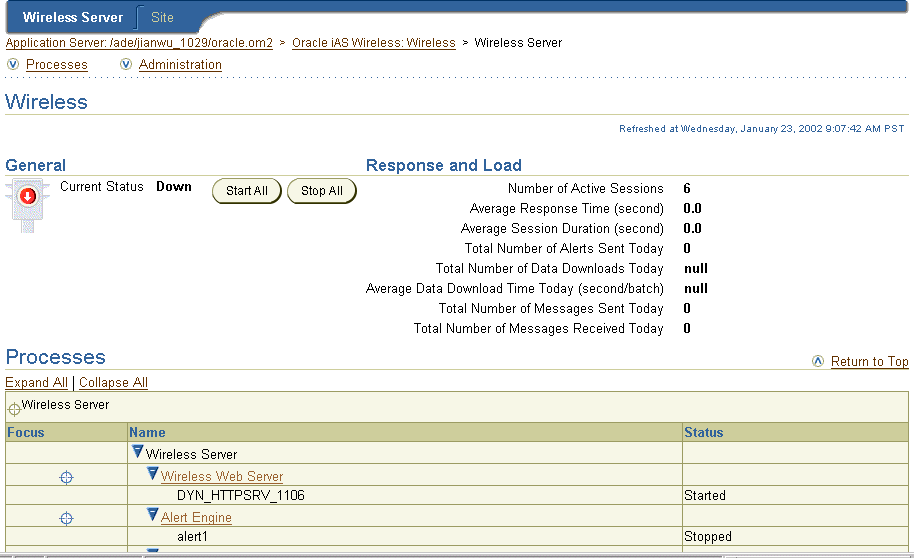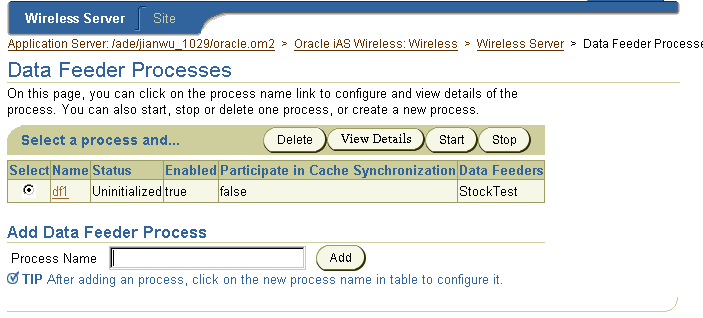| Oracle9iAS Wireless Administrator's Guide Release 2 (9.0.4) Part Number B10685-01 |
|
|
View PDF |
| Oracle9iAS Wireless Administrator's Guide Release 2 (9.0.4) Part Number B10685-01 |
|
|
View PDF |
This chapter describes how to manage the Wireless Server. Each section describes a separate topic. These sections include:
From the Wireless Server tab, you can start and stop Wireless processes. Start these processes at the same time using the Start All and Stop All buttons, or individually by clicking the start and stop buttons in either the processes or detail screens.

The process types, which are hyperlinks in the Processes table of the Wireless Server tab, represent the top-level of the Wireless server. By default, these Wireless processes display in an expanded mode, meaning that each node representation of the processes on the server appears in the Processes table. From an expanded view, you can see which processes are started (running), stopped (suspended), or uninitialized (the process has never been run).
Clicking the nodes enables you to drill down to the processes screens and the detail screens for a selected process. These screens, which display the current state of a selected process (started, stopped, or uninitialized), include buttons that enable you to start or stop a selected process. In addition, these screens enable you to create, edit, delete, and configure a process.
|
Note: Because it may take a few moments a process to start or stop, you must click the browser's Refresh button to get the current running status of a data feeder process. |
See Section 10.3 in Chapter 10 for information on the processes or detail screens. For more information on creating, editing, deleting, and configuring processes, see Chapter 12, "Server Configuration".

Each section describes how to start or stop a Wireless process. These sections include:
To start a messaging server process:
To stop a messaging server process:
To start an performance monitor process:
To stop an performance monitor process:
To start a PIM notification dispatcher process:
To stop a notification server process:
The System Log Files screen, invoked by clicking System Log Files, displays all the files under the log directory on the Wireless Server machine. Wireless writes server error information to the files and directory specified in the configuration.

You can view a log file by clicking a file name link. (You can drill down to a subdirectory by clicking the link for that directory).

In addition to error messages, Wireless provides extensive runtime exception logging. When fatal exceptions occur, Wireless logs the exceptions and stack traces in the global log file.
You can specify number of lines from the end of the log file to be displayed. You can also print a selected segment of the file as a text file by clicking Printable Page. The screen displays the segment of the log file to be printed. Use the browser's back button to navigate from this screen.